How did a rare US Senate book bearing King Charles’ name land in a used bookshop?
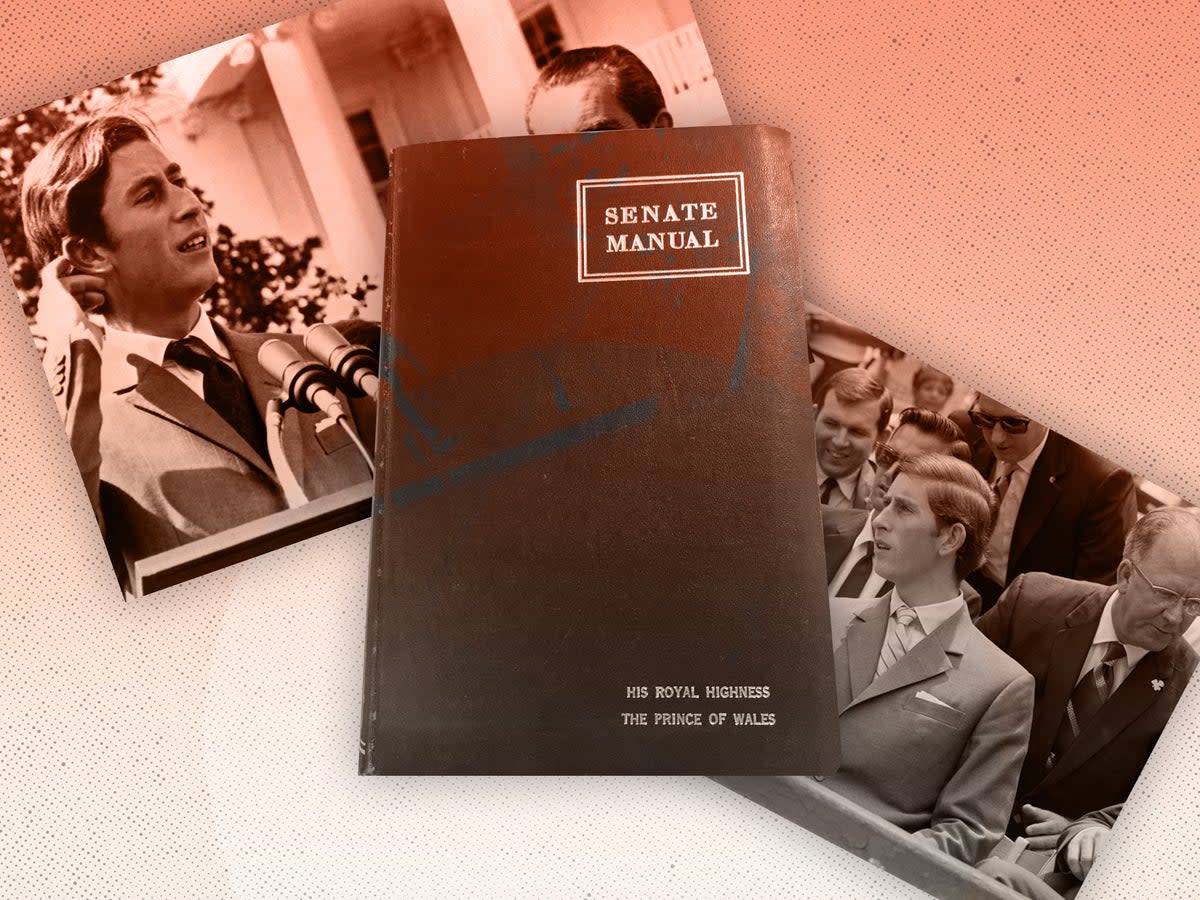
- Oops!Something went wrong.Please try again later.
Even at first glance, it was an unusual thing to find in the stock of a British second-hand book dealer: a leather-bound copy of the rules and procedures of the United States Senate, one of 450 printed for the nation's 91st Congress in 1969.
But what made it truly intriguing were the gilt letters stamped on its front: “His Royal Highness the Prince of Wales.”
Those words suggest that the book was intended — and perhaps given — as a gift to the future Charles III, king of the United Kingdom of Great Britain and Northern Ireland, by one of Britain's oldest frenemies.
Now, as we approach the coronation of King Charles on Saturday 6 May, the curious case of the discarded Senate rulebook could offer a unique view into his relationship with America.
“It was in very good condition, and I could not believe how inexpensive it was,” Jeff Davis, a Washington DC resident who picked up the book for a mere $9.39 (£7.53) plus postage back in 2018, tells The Independent.
“I have no proof that the book was actually given to the prince or his entourage, but if it had not been given, I presume it would have wound up at a used book shop in the US, not a used book shop in the UK.”
In 1970, then-Prince Charles was on a ceremonial visit to DC and toured the Senate, where they gave him a personalized copy of the Senate rule book. He muse not have appreciated the gift properly, because I found it in a used bookstore in 2018 and got it for $20. pic.twitter.com/WB2ohyemxP
— Jeff Davis (@JDwithTW) September 8, 2022
A ‘wisecracking’ royal visit to Washington DC
Mr Davis says that he discovered the book by accident on 28 July 2019 while browsing AbeBooks, a centralised sales system for second-hand shops around the world.
As a former committee aide in the US House of Representatives, he collects old rulebooks from both chambers of Congress, which are printed at the start of each new legislative period (i.e., every two years) and distributed to federal libraries across the country.
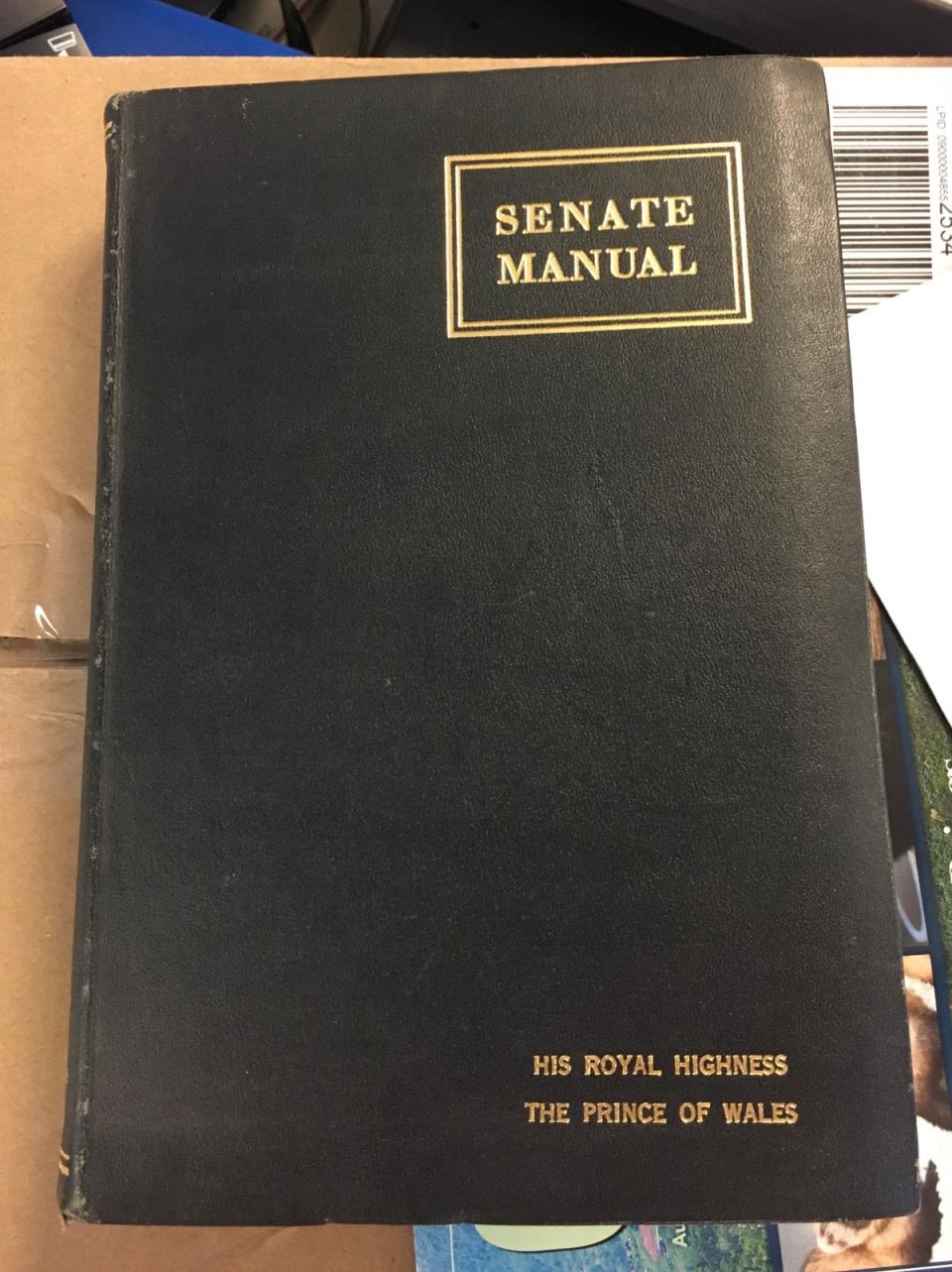
Most of these rulebooks are in plain paperback form, says Mr Davis, who is now a senior fellow at the DC-based Eno Center for Transportation. But a limited number are bound in leather and given to congressfolk and their senior staff, with their names embossed on the cover.
A notice in the front of the rulebook proclaims that in 1969, the Senate ordered 450 of these leather copies — enough for all 100 senators and their senior aides, with plenty left over for visiting dignitaries.
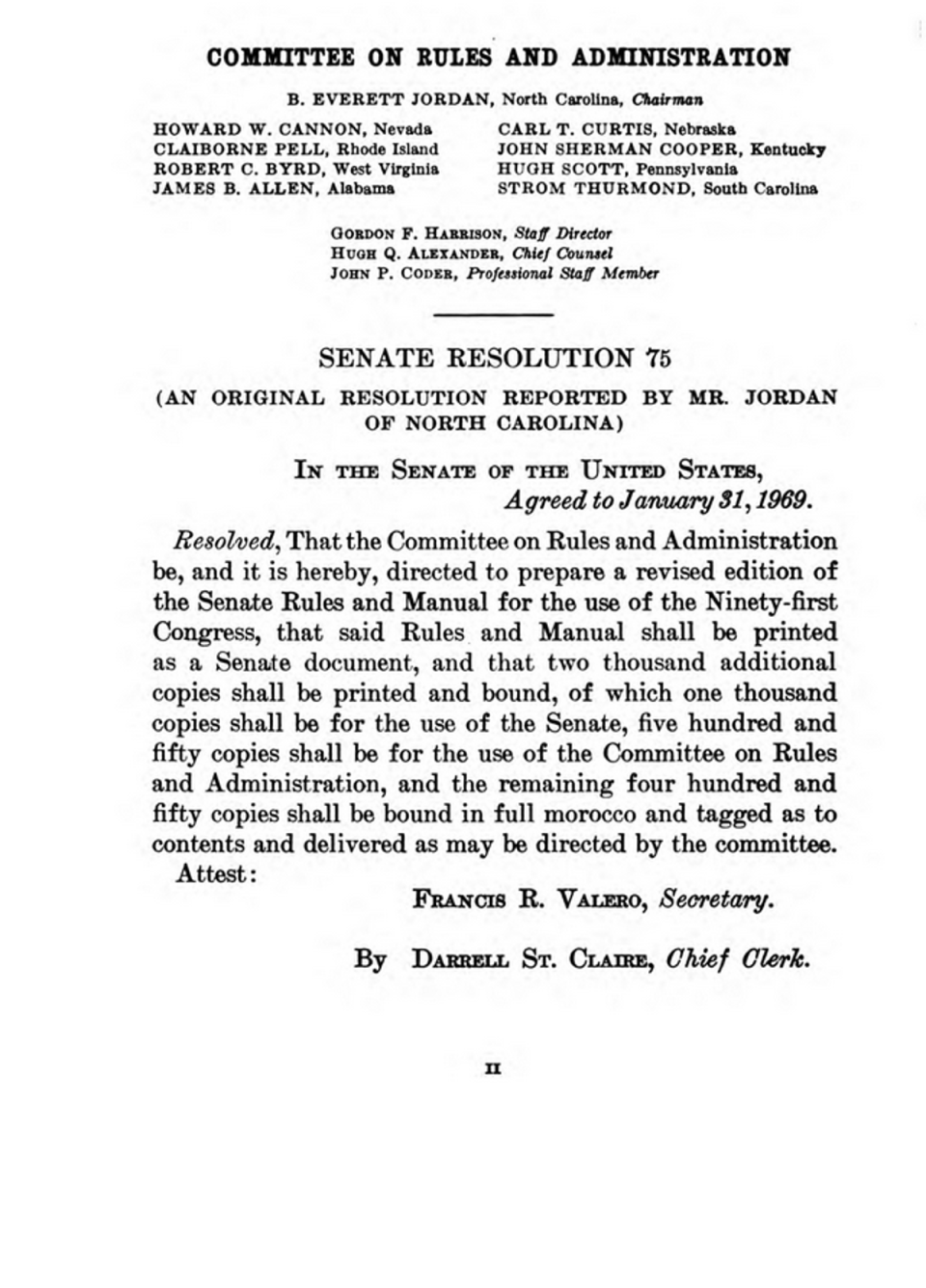
That's where King Charles III comes in. In 1970, the young royal toured the Capitol building and the Senate chamber as part of his first visit to the United States, along with taking a cruise down the Potomac River in Richard Nixon's presidential yacht.
“Prince Charles wisecracked his way through the US Capitol Friday,” reported The Hartford Courant on 18 July 1970, crediting the press agency UPI.
“With their youthful hosts at their sides, the Prince of Wales and Princess Anne strode, sailed, and danced their way gaily through a typical 90-degree July day in the capital.
“They strained to understand Sentor Strom Thurmond's thick South Carolina drawl. They were fascinated by George Washington's peace dove weathervane at Mount Vernon. And they seemed awed by Neil Armstrong, the first man on the moon.”
In Congress, the story goes on, “the 21-year-old prince and heir to the British throne was the comedian of the day, leaving a trail of one-liners throughout the ornate chambers of the Senate and the House of Representatives.”
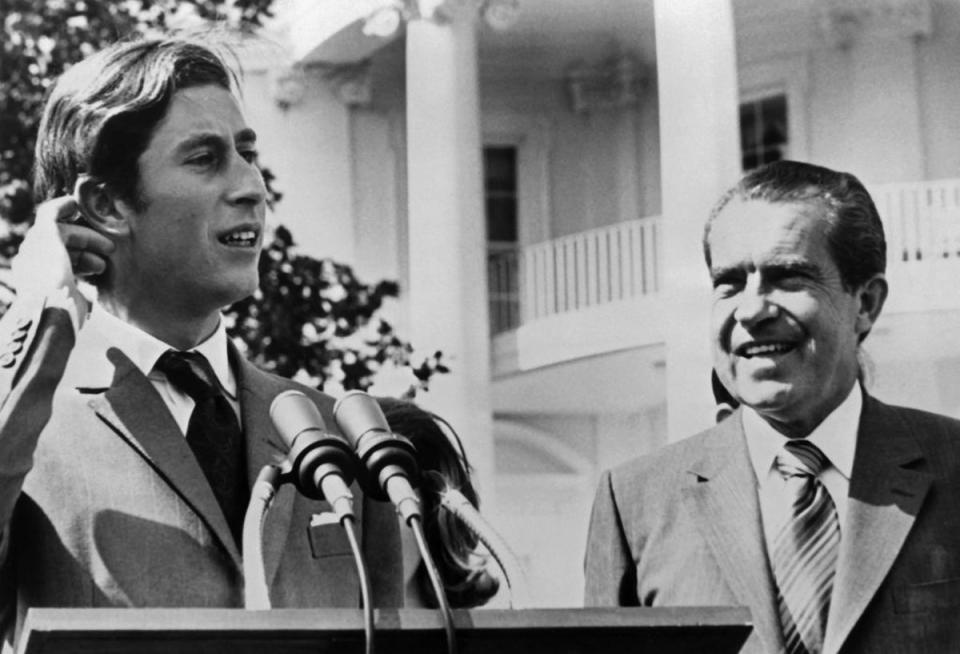
For instance, when a guide showed him a painting showing the defeat of British troops under General Cornwallis during the American Revolutionary War, Charles pointed at a figure and asked if it was Cornwallis. “No, he is not pictured. He was sick that day,” the guide said. “That's probably why he lost,” Charles quipped.
Later, Anne apparently took exception to the slow speed of the presidential yacht and commandeered one of the Coast Guard speedboats escorting the party, bombing up and down the river at around 60 miles per hour.
The occasion was only marred by one of the American crew accidentally making the international symbol for a ship in distress by flying the British flag upside down (an easy mistake given its early symmetrical design).
How did a royal gift end up on AbeBooks?
It is on this visit, Mr Davis believes, that the rulebook was given to Charles. But if so, how did it end up on AbeBooks?
“My supposition is that, in anticipation of the royal visit, someone — probably whoever in the Sergeant-at-Arms' office [was] in charge of protocol visits — had extra copies of the rule book embossed and gave them to the royals as ceremonial gifts when they toured the Senate,” says Mr Davis.
“Charles said thank you, handed the book to an aide, and at some point in the next 48 years the book made it to Bookbarn International just south of Bristol.”
Unfortunately, the next part of the trail is difficult to follow because Bookbarn — an English online bookshop coincidentally founded by a direct descendant of Charles Darwin – closed its doors in 2022.
The Senate's official historians have also drawn a blank. “I’ve checked with the Senate curator’s office, and unfortunately neither they nor our office has any information on the gifting of that manual to Prince Charles,” assistant historian Daniel Holt tells The Independent.

“We typically see manuals with the names of senators embossed on the cover, so this one seems unique. Charles did tour the floor of the Senate Chamber while he was here, so it is certainly possible that he was gifted the volume as part of that experience.”
Alas, Buckingham Palace did not respond to The Independent’s request for comment, meaning the rulebook's journey from DC to the UK and back again may remain shrouded in mystery.
The leaders of the Republican and Democrat blocs in the Senate also did not respond to requests for comment.
Charles III has an awkward history with Americans
If the book really was given to the King, it’s unclear why it did not end up in some royal collection or British museum, rather than ejected into the endless Indiana Jones-like warehouse of the used book economy and put on sale for less than $10.
Indeed, a reader would be forgiven for wondering what its fate might say about the young King Charles's feelings on the US.
As chronicled last year by New York Magazine, Charles has had some awkward moments while visiting America. When he met Ronald Reagan in 1989, he was apparently perturbed by being served tea not only from a tea bag (as opposed to loose leaf tea) but with the bag still in the cup – a considerable faux pas.
“It finally dawned on me that he was just holding the cup, and then finally [he] put it down on a table. I didn’t know what to do,” Reagan wrote in his diary. “[My aide] escorted him back to the White House and apologised. The Prince said, ‘I didn’t know what to do with it.’”
On another visit in 1985, asked by reporters whether his then-wife Princess Diana had enjoyed dancing with John Travolta, his response seemed rather coarse. “Well, I'm not a glove puppet, so I can't answer for that,” he said, before turning to Diana. “But I think you enjoyed it, didn't you? Be an idiot if she didn't enjoy dancing with John Travolta, wouldn't she?”
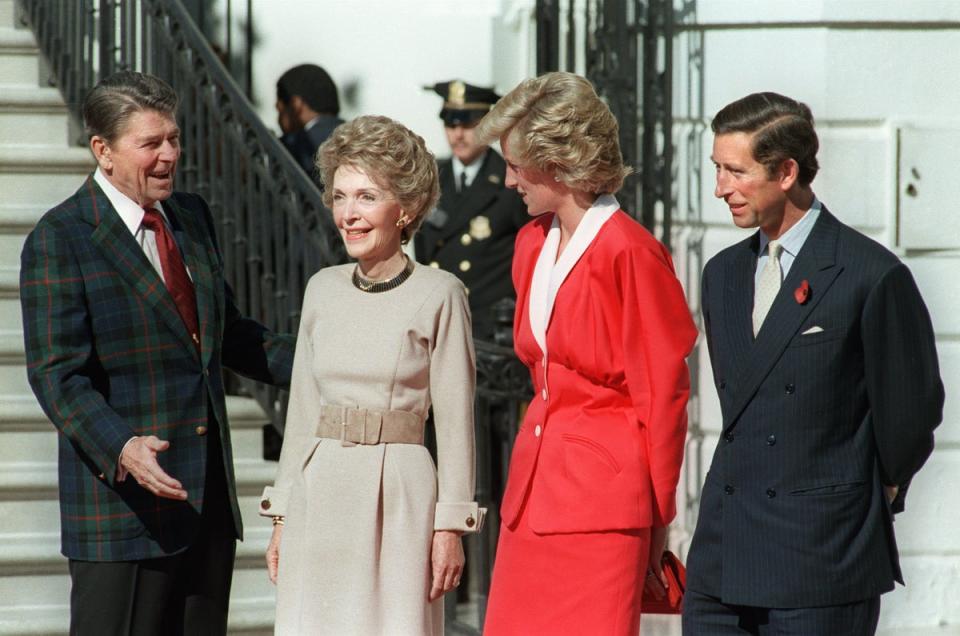
Royal biographer Brian Hoey also writes that Charles was “not amused” by an American who addressed him as “Hi, Prince!” He apparently told his private secretary to inform future hosts that “if fellow guess could not manage his full title, he would prefer a plain ‘Charles’”.
Then there is the matter of his son Prince Harry and daughter in law Meghan Markle, whose outspoken exile in California and accusations of racism and bullying within the British monarchy has caused considerable damage to the reputation of what insiders sometimes call "the Firm".
On the other hand, this is merely a smattering of incidents across more than 50 years, and we have no way of knowing whether it represents the King's overall feelings about the United States.
Still, while his reception in DC in 1970 was reportedly very warm, King Charles may have his work cut out for him in winning the hearts of the American people today.
With memories of his divorce from Princess Diana still fresh in many Americans' minds, a recent poll by YouGov found that he was among the least popular living members of the British royal family.
Only 17 per cent of respondents wanted Charles to succeed his mother Elizabeth as monarch, compared to nearly twice that number who preferred that the crown skip directly to his son Prince William.

